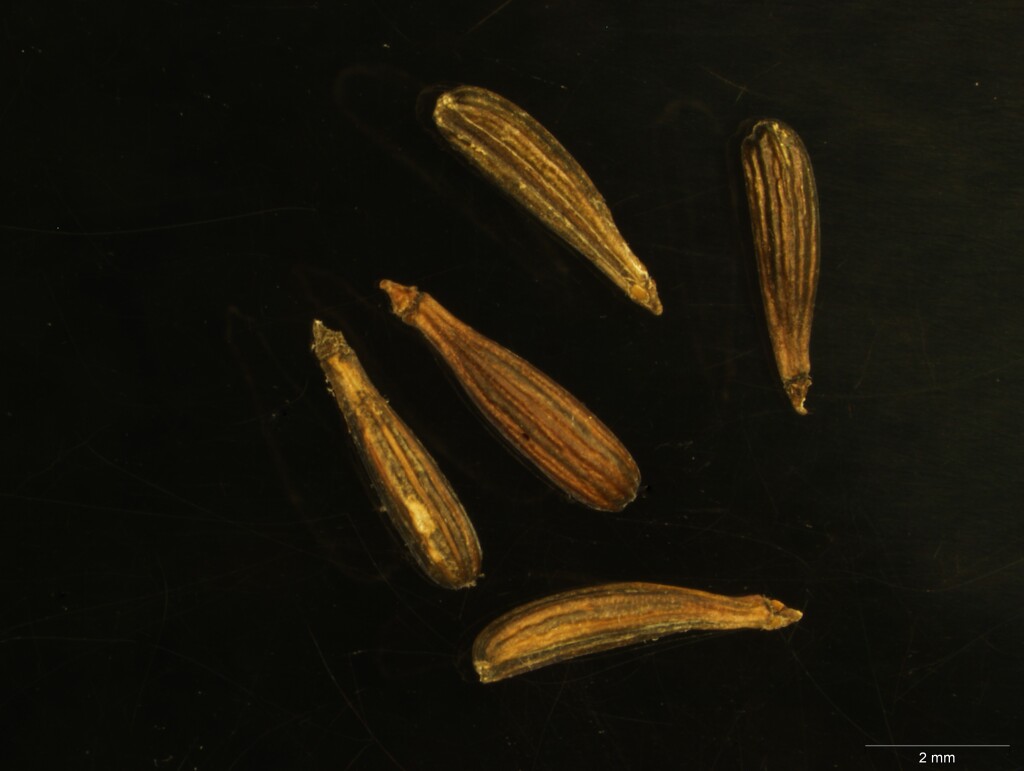Oreomyrrhis ciliata
Hook.f. CarawayRosetted perennial to 35 cm high; taproot slender. Leaves pinnate, lamina oblong to broad-lanceolate in outline, 1–5 cm long, 0.75–1.5 cm wide; leaflets 9–c. 21, narrow-lanceolate, glabrous except for finely toothed to ciliate margin; petiole 1.5–15 cm long; leaf-sheath glabrous, scarious. Scape erect, with spreading hairs, usually slightly longer than the leaves (but elongating to c. 35 cm in fruit); umbels 5–25-flowered; involucral bracts 6–8, acute, ovate with ciliate margins and apices, 2–3 mm long. Petals white with yellow midvein, glabrous or pubescent on outside, c. 1 mm long. Fruit 5–18 per umbel, ovate, c. 4 mm long, dark brown, glabrous, with 5 prominent rounded tan ribs. Flowers and fruits Dec.–Feb.
HSF, HNF, MonT, HFE, VAlp. Also NSW, Tas. Occurring in alpine areas in herbfields, usually associated with Sphagnum mossbeds.
This species superficially resembles Oreomyrrhis eriopoda, a species typically of drier habitats, but can be easily distinguished from that species by its finer, glabrous leaves.
Jobson, P.K. (1999). Oreomyrrhis. In: Walsh, N.G.; Entwisle, T.J., Flora of Victoria Vol. 4, Cornaceae to Asteraceae, pp. 269–272. Inkata Press, Melbourne.
 Spinning
Spinning
